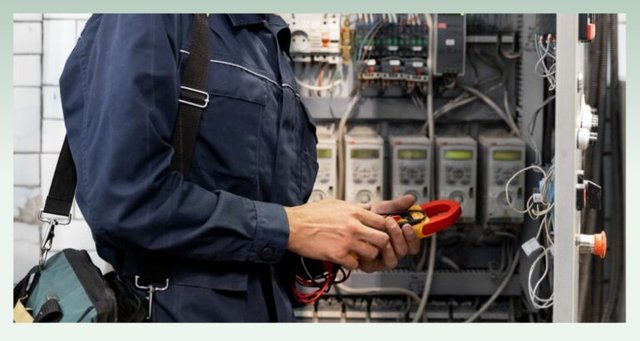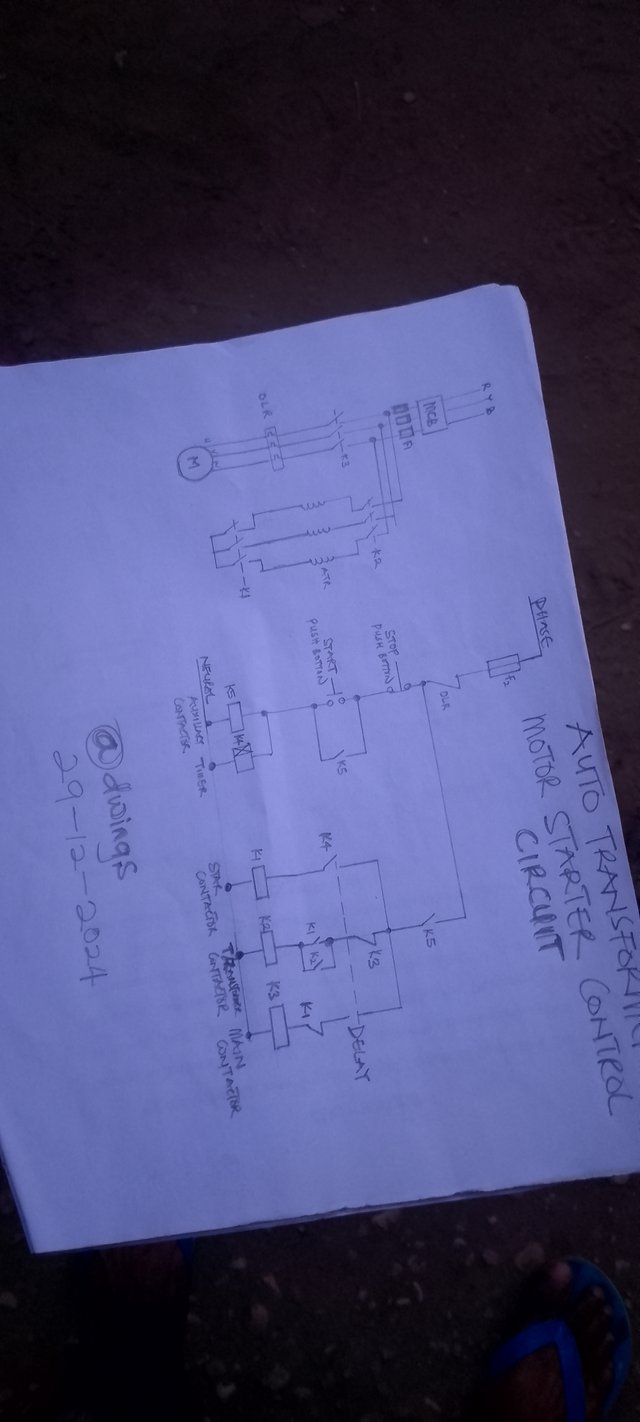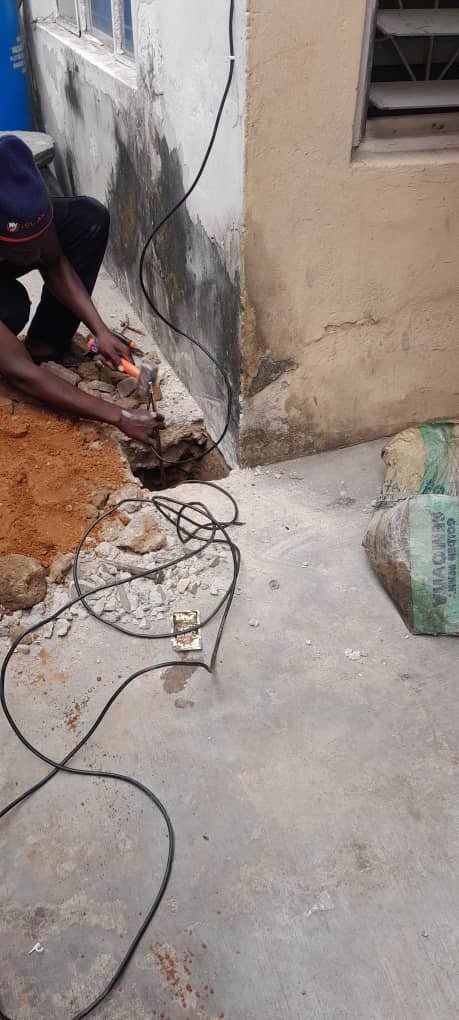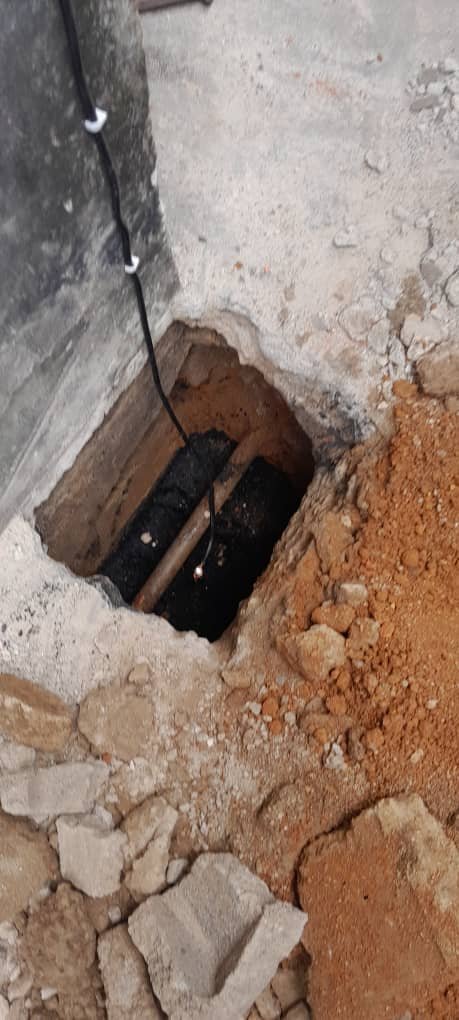Electrical Earthing and Motor Control Circuits."

sourced
It's a pleasure to participate in this steemit learning challenge. I sincerely appreciate the intelligence of our tutor and all of you that have participated in this lesson.
From my interaction with some persons, I have come to realize that many people are very scared of electricity because of the fear of being electrocuted. One way to avoid electric shocks is to earth electrical appliances as the earth is a charge conductor with zero potential. What's earthing really all about? It is a process that involves the transfer of excessive electrical charges from an electrical device to the earth through a low resistance wire.
In my country, earthing of electrical appliances is a major priority in protecting lives and properties though they are some electrical engineers who may run electrical connections and installations without setting up the earthing system due to reasons best known to them; nevertheless earthing of electrical appliances should be encouraged as it helps to prevent electric shocks, etc. Many persons have lost their lives as a result of electric shocks. Earthing also helps in stabilizing of the voltage. It prevents the damaging of equipment as well as reducing the risk of electrical fire outbreaks, etc.
Write the differences between earthing and neutral.
When I started learning how to run electrical connections some years ago, my boss would always tell us not to miss out the connecting of the neutral cable. And whenever it wasn't linked from the control unit or distribution board to the lighting point, it doesn't light up when the light switch is put on. So, the netral is very important as it helps in the completing of the electrical circuit.
Some differences between earthing and neutral are:
| Earthing | Neutral |
|---|---|
| It aids in the stabilization of electrical charges through the transmission of excess of the electrical charges into the earth. | It helps to complete the flow of electrical charges in an electrical circuit. |
| It can't substitute the neutral. | Neutral can be grounded. |
| There are different types of earthing such as; Rod, Plate, Pipe, Boarding earthing, etc. | There are no various types of neutral. |
| Its insulator is always green or green-yellow | Its insulator is always black. |
| It helps to prevent or minimize danger(shocks , etc)during the discharge of electrical energy. | It takes current back to its source. |
When you touch the body of an electrical home application in your home or office, what kind of earthing do you use and why?
It is important to earth every electrical appliances to prevent electric shocks. I will make use of the rod earthing not just that they are easy to install but it best serve the purpose of body earthing.
Draw any one type of motor starter control circuit and describe the diagram.

Key
F2 = Fuse
K1 = Star contractor
K2 = Transformer contactor
K3 = Main contactor
K4 = Timer
K5 = Auxillary contactor
OLR = Overload relay
Explanation of the circuit
The Phase (supply) is connected to input terminal of the Fuse while it's output terminal is connected to the input terminal of the Overload relay. The terminals of the Stop Push Button are connected to the OLR and the input terminal of the Start Push Button. The outgoing terminal of the Start Push Button is connected to the even terminal of the Auxiliary contactor. Without the holding circuit, the auxiliary contactor will switch on and off intermittently quth the push in and pull out of the Start Push Button. Therefore, a holding circuit is created at the Start Push Button terminals with an NO(normally open) auxiliary contactor. Another NO(normally open) auxiliary contactor is connected at the output terminal of the Stop Push Button with it's other end connected to the NC(Normally close) main contactor, the Timer NO and the Star contactor NO.
A brief working principle of the Auto Transformer Motor Starter Control Circuit
When the Power supply(phase) is turned on, it passes through the Fuse down to the input terminal of the Start Push Button and the K5. It stops at the NO contact of the Auxiliary contactor; so the power supply gets to 3 points which are: the input terminal of the Start Push Button and the other 2 points are the two NO Auxiliary points (K5).
To start the motor, you press the Start Push Button which will result in the turning on of the Auxiliary contactor, the Timer and the Auxiliary NO(K5) connected at the Start P.B. When the both Auxiliary NO changes to NC, current flow into the Star contactor. When the Star contactor is turned on, the NC of the Time contactor turns on resulting in the turning on of the Transformer contactor. At this point the timer starts counting and when the set time is reached the Timer NC changes to NO. When the Timer NO changes to NC, the Main contactor turns on while the Star and Transformer contactors turn off.
To turn off the main contactor , you simply press in the Stop Push Button.
Make a rod or pipe earthing for your home and share the process in pictures or videos.

The earthing materials were obtained which included the copper earth rod, earthing wire , coal and salt. The location for the exercise was selected. The earth was excavated to the about 8 - 10 feet deep. The earthing wire was then coupled firmly to the earth rod and pinned down into the earth with the help of a hammer.
The coal and salt was the poured into the pit with the continuous addition of water.

The earth was then covered with sand . The other end of the earthing wire was then tightened to the earthing terminal on the distribution board.
I would like @ahsansharif @basil20 @shadow04 @nsijoro @bossj23 to take part in this learning challenge.
My x link
https://x.com/Dj95885David/status/1873500776129302769?t=gr9iqCwo5XvbIqSXwYM4sA&s=19